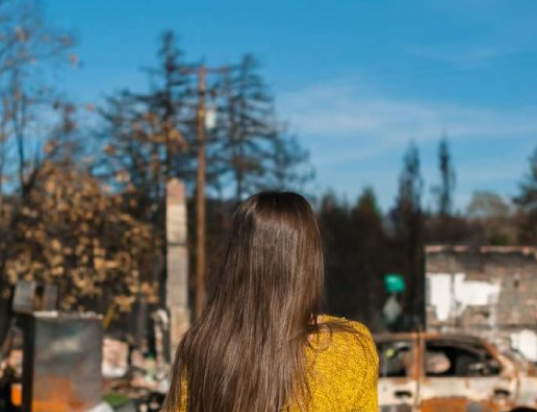Your comprehensive guide to wildfire insurance.
What is wildfire insurance?
There isn’t a singular insurance product called “wildfire insurance,” but there are several different kinds of insurance policies that collectively help insure your assets that may be damaged by wildfire. Wildfire insurance is an umbrella term that includes several types of coverages to protect your home, personal belongings, vehicle, and other assets against damages.
Home insurance.
Homeowners insurance provides coverage for your home and personal belongings if they are damaged or any covered peril listed in your home insurance policy. This typically includes wildfire damage, but not always. Home insurance includes dwelling coverage, which covers the physical structure of your home, and other structures coverage, which covers any detached structures, like a detached garage or a shed. It may also include loss of use coverage, also called additional living expenses coverage, to help you cover temporary living expenses while your home is being rebuilt or repaired.
Renters insurance.
Renters insurance typically provides coverage against fire damage for your personal belongings after a wildfire. It also protects against smoke damage and may include loss of use coverage to help you cover temporary living expenses.
Condo insurance.
Like home insurance, condo insurance protects both the structure of your condo and your personal belongings against any fire damage. Your policy may also include additional living expenses coverage to help you temporarily relocate after a wildfire.
Auto insurance.
Auto insurance policies typically include both collision coverage and comprehensive coverage. Comprehensive coverage covers damages to your car that result from anything other than a collision, which includes wildfire damage.
Does homeowners insurance cover wildfires?
Many people ask if homeowners insurance covers wildfires. The answer is typically, but not always. Particularly for California residents in fire-prone areas, wildfire insurance coverage has become increasingly challenging to obtain. With the disappearance of a regular wildfire season, year-round risks are the new norm many California residents are finding it increasingly difficult to find homeowners insurance policies that include wildfire coverage. In the face of increasing risk, more and more insurance companies are rejecting renewals for these policies, canceling policies, or omitting this type of coverage from written policies.

Home insurance protection for wildfire.
If your homeowner insurance does cover wildfire, here is an overview of the types of protection available.
Dwelling and other structures coverage.
Together, dwelling coverage and other structures cover the structure of your home as well as detached structures like a shed, deck, detached garage, or fence. To ensure your home is fully covered, your coverage limits should be equal to the replacement cost of your home. This is the amount required to rebuild your entire home to its original quality if it is completely destroyed by a wildfire.
Personal property coverage.
The personal property coverage included in your home insurance policy covers your personal belongings against wildfire damage. This includes your furniture, appliances, electronics, clothes, and valuables.
Loss of use coverage.
Loss of use coverage can help you cover temporary living expenses if you are forced to relocate after a wildfire destroys your home. This can include temporary accommodations, meals, and other expenses that you incur while your home is being rebuilt.
Your loss of use coverage is typically equal to 20% of your dwelling coverage limit. If you live in a fire-prone area, though, you may consider purchasing more loss of use coverage to ensure your temporary living expenses are covered if you have to flee due to a wildfire.
Liability coverage.
This covers medical expenses and property damage for others who have been harmed on your property.
How to get homeowner insurance in a fire-prone area.
If you live in a high-risk area and are having trouble finding affordable homeowners insurance, there are a few other options for covering your home against fires.
Fair Access to Insurance Requirements (FAIR) Plans.
FAIR Plans are available in every state and provide coverage for homeowners who aren’t able to find home insurance in the private market due to their home’s location. In addition to fire, FAIR Plans cover other hazards, like vandalism and windstorms.
However, while these plans do offer coverage against fires and other disasters, they often do not offer some other essential coverages, including liability, medical payments, and in some cases, loss of use coverage.
FAIR Plans are often very expensive and designed to offer temporary coverage and they typically have a cap on the policy amount, so this may not be a good option for high-value homes. Homeowners should continue shopping for insurance in the private market to try to find an affordable, more comprehensive insurance policy.
Surplus or Excess Lines Carriers.
Surplus or excess line carriers are insurance providers that cover risks that standard insurance policies refuse to cover. If you can’t find home insurance through the private market due to your fire risk, this may be an option for you.
These carriers typically offer much more expensive policies than standard carriers, though, making this option a last resort for homeowners that can’t find coverage elsewhere.
Premier Carriers.
Premier carriers offer home insurance for high-value and high-risk properties. They may even provide additional coverage benefits like fire prevention and firefighting services.
To qualify for one of these policies, though, your home typically needs to exceed a minimum value.
What if your California homeowner insurance is canceled or non-renewed?
It is becoming increasingly common for insurance companies to either cancel policies or deny renewals, for California residents. This can be a frightening event, but take comfort in the fact that you always have a right to wildfire insurance, no matter where you live in California. Here’s what you need to know regarding cancellations and non-renewals for wildfire insurance coverage.
Dropped Home Insurance Policies.
Canceled or dropped home insurance policies occur when your insurer decides to write off a policy, leaving you without coverage. This practice is becoming increasingly common for residents in high-risk areas. In response, California implemented a temporary ban on insurance companies dropping customers in areas affected by recent wildfires. This meant that your insurer had a legal obligation to maintain your coverage. Insurers couldn’t drop coverage for a policy that had been in effect for at least 60 days. Unfortunately, the temporary ban on dropped policies ended at the end of 2020
Non-Renewals.
A non-renewal occurs when an insurance company decides that it will not renew your policy after its expiration date. Typically, an insurance policy term ranges from six months to one year. Wildfires, however, are now a year-round risk in California, and the practice of non-renewals is becoming increasingly common. As your existing policy term reaches its end, we highly recommend keeping a list of other potential insurance providers on hand. If you are caught off-guard by a non-renewal, having this list of potential providers could help to prevent gaps in coverage that might otherwise leave your assets exposed to risk.
Making a wildfire insurance claim.
Keep these tips in mind when filing a home insurance claim after a wildfire:
- Contact your insurer as soon as possible: After a wildfire damages your home, contact your insurance provider to file your claim as quickly as possible. It’s important to get this process started quickly so that you receive reimbursement as soon as possible.
- Take photos and videos: After a wildfire has passed and it is safe to enter your home, be sure to document all of the damages. Take photos and videos of your home and personal belongings to provide your insurer with proof of damages.
- Track your expenses: If you have to temporarily relocate after a wildfire, make sure to track your living expenses and keep all of your receipts so that you are properly reimbursed.
In most cases, you have to make a claim within 60 days of the damages. If your claim is denied or you receive less than you should, you can always file an appeal with your insurance company to have your claim reviewed.

Wildfire Insurance FAQ.
Wildfire insurance often refers to the coverage against fire damage included in home insurance policies, which means your total cost for wildfire insurance will be determined by several factors, including:
– Location
– Home replacement cost
– Home value
– Coverage limits
– Claims history
– Home safety features
– Age and construction of home
– Estimate wildfire exposure risk
Wildfire insurance prices can vary significantly depending on where you live. Per the Insurance Information Institute (III), the average premium for homeowners and renters insurance in 2018 was $1,249.
While this was relatively affordable for many homeowners, the annual cost of homeowners insurance for residents in fire-prone areas can be much higher and has gone up significantly in recent years. In certain areas of California, for example, fire insurance can be as much as tens of thousands of dollars per year.
As wildfires become more frequent and more severe, insurance rates in fire-prone areas are continuing to increase, leaving many homeowners unable to adequately protect their homes.
Condo insurance does typically cover wildfire damage done to your condo’s interior walls. Condo insurance policies typically include the following coverages:
– Interior walls coverage
– Personal property coverage
– Additional living expense coverage
Your homeowners association’s master policy should cover any damages that a wildfire does to the exterior of your condo.
Yes, fires, including wildfires, are one of the hazards typically covered by homeowners insurance and hazard insurance.
For homeowners in California, this coverage is particularly important as it can help them recover from damages caused by wildfires. Not only can your homeowners insurance policy help pay to repair or rebuild your home, but it can also help you replace your damaged personal belongings and cover temporary living expenses if you are forced to evacuate your home.
Generally speaking, renters insurance policies include fire damage as a named peril, which means they do cover damage from wildfires. If your policy doesn’t have named perils, then you likely have an all-risk policy, which also covers fires.
Renters insurance differs from homeowners insurance, though, in that it does not cover your actual dwelling. When renting, your landlord’s landlord insurance policy should cover any damages done to your home’s structure, so you shouldn’t have to worry about covering repair expenses.
Renters insurance policies typically cover fires from any source. Whether the fire originates from inside your home or a wildfire spreads to your home, your claim should be approved.
When you shop for home insurance, insurers take several factors into account to determine how much risk they would be taking on if they insured your home. Depending on your risk factors, your home insurance premiums may be very expensive, or in some cases, insurers may refuse to offer coverage at all.
There is no clear definition of a high-risk home as each insurance company uses its own criteria to assess risk. In some cases, you may be denied coverage by some insurers while others are more willing to write a policy.
For example, if you live in a fire zone and your home is located near a forest, you would have a more difficult time finding affordable coverage than someone who lives in the same area but away from any forests or other fuel sources.
For homeowners in California, this coverage is particularly important as it can help them recover from damages caused by wildfires. Not only can your homeowners insurance policy help pay to repair or rebuild your home, but it can also help you replace your damaged personal belongings and cover temporary living expenses if you are forced to evacuate your home.

The Frontline Wildfire Defense System.
If your home is in a wildfire-prone area, you know how difficult it is to secure a quality home insurance policy and avoid a non-renewal notice. Installing a home fire sprinkler system like Frontline is viewed favorably during an insurance underwriting assessment. This can make it easier to secure a policy from a preferred provider—and your carrier may even offer credits or discounts for installing the system.